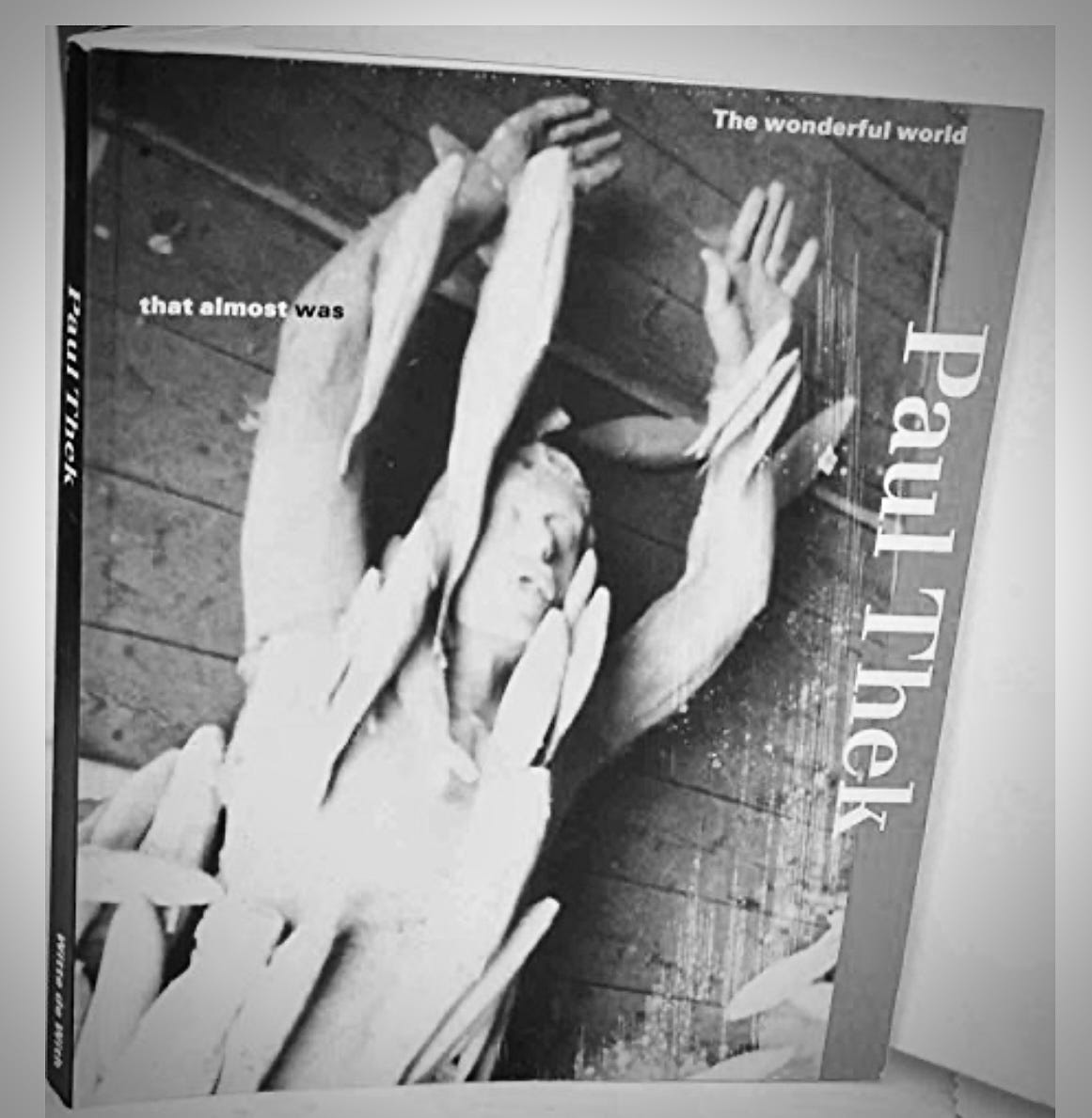Thek's Teaching Notes
An essay written for a small publication in 2010 as part of the Whitney Museum's Paul Thek retrospective. The notes were an inspiration for my project with Miranda July: Learning To Love You More.
A photo of the Thek book I thought I first encountered at one time, but later realized that was impossible.
……………..
I came across Paul Thek’s work and his teaching notes during my first week of graduate school at what was then called California College of Arts and Crafts in Oakland, CA (it is now California College of the Arts in San Francisco). This was in 1992 before there was a very publicly accessible Internet, (even if there had been one I didn’t get my first computer until about six years later, I’ve never been very technology oriented), so my main way of learning about art and artists was through books at various libraries. I was in the school library looking around at the collection of books and I was feeling very disappointed with what I was discovering—a largely out of date set of books, (that library has since improved dramatically) but then I pulled out a book that I hadn’t seen before--Paul Thek: the wonderful world that almost was.
I glanced at the cover and flipped through the pages and then decided to sit down and have a longer look. I’m still a little perplexed about why that very rare and recently published book was in the CCAC library collection amongst mostly other books that were decades old and largely uninteresting to me. I had time on my hands so I just stayed put looking through the book for an hour or so, reading various texts, trying to get a handle on this person who was totally new to me and very intriguing. At the end of the book there was a section called Teaching Notes: 4-Dimensional Design, and a little description that said that Thek had taught a class at Cooper Union between 1978 and 1981 and used the teaching notes for his class.
(I’m not sure how to explain this, but after writing that first paragraph I did a little online research about the Thek book and found out that it wasn’t published until 1996, so my memory of first seeing it in 1992 is wildly incorrect. But it feels so true. I’ve thought about that experience of looking at that book at that point in my history so many times, it seemed like it informed my graduate experience and everything that came after it, but in reality the earliest I would have encountered the book (I am certain it was in that library, just during a visit and I guess not when I was in school) is two years after I’d completed my MFA. Very strange, just goes to show how flexible memory can be. But anyway…)
Keep reading with a 7-day free trial
Subscribe to Middling to keep reading this post and get 7 days of free access to the full post archives.



